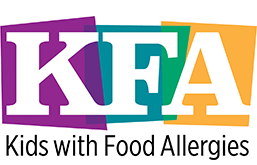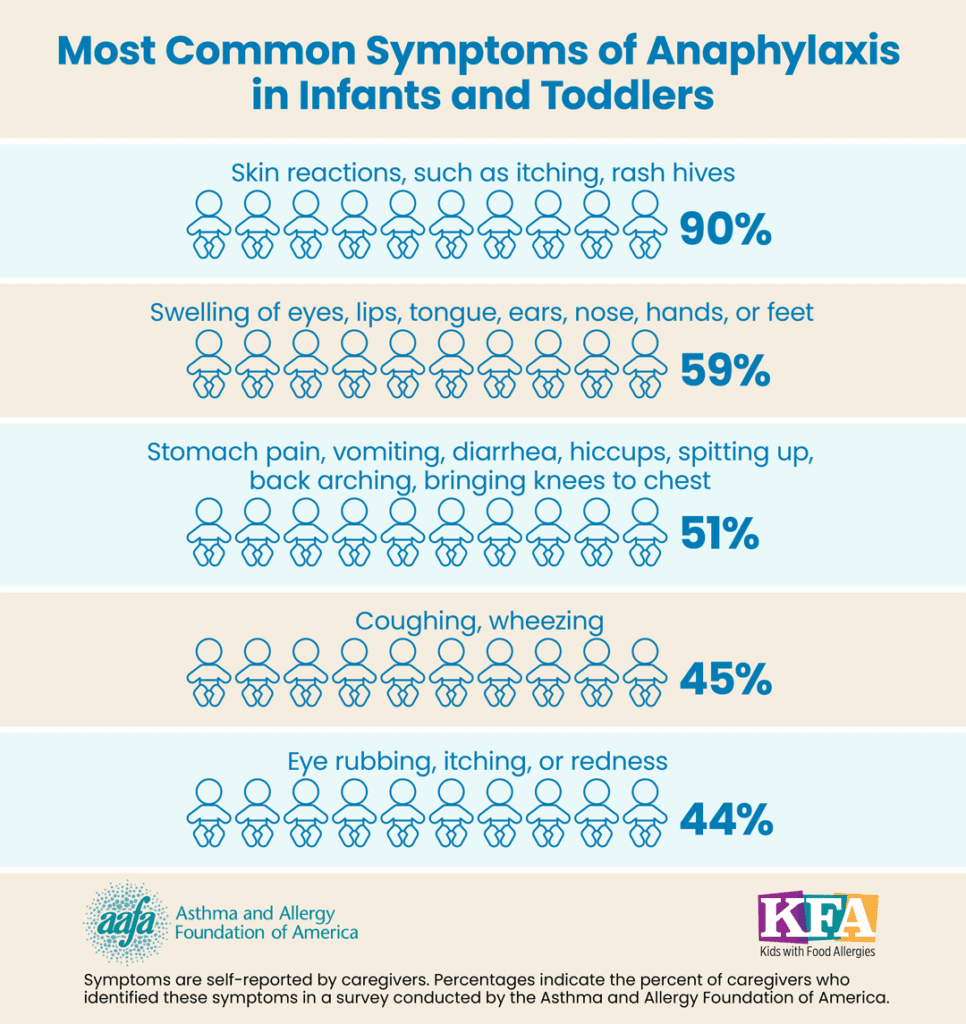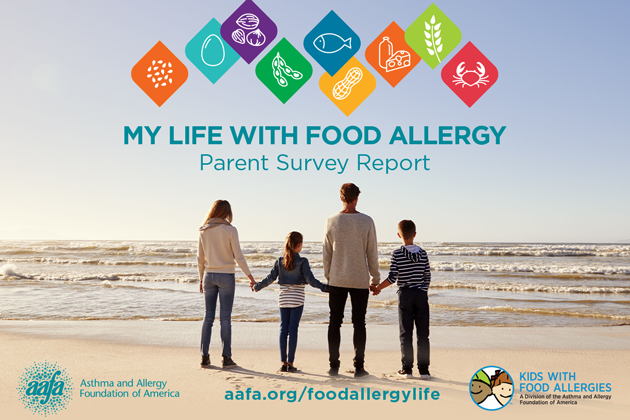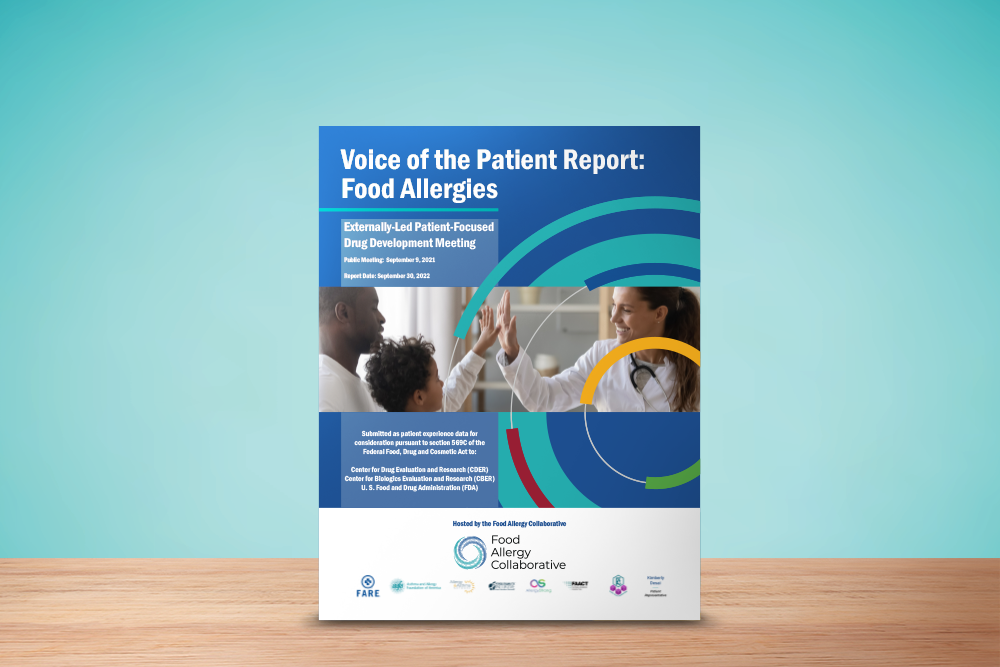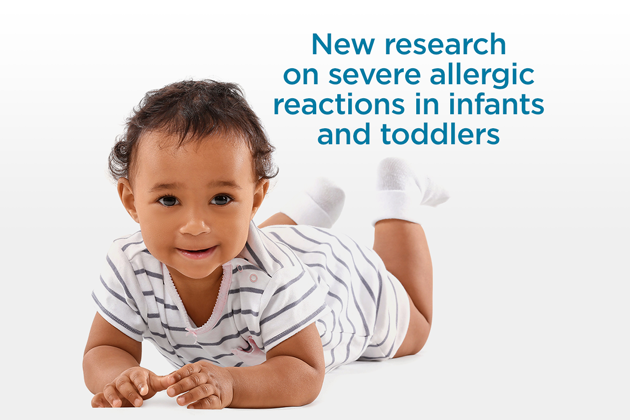Research

Food Allergy Anaphylaxis in Infants and Toddlers
Anaphylaxis is a severe allergic reaction that can be life-threatening if not treated quickly and properly. But the signs and symptoms can be hard to recognize, especially in infants and toddlers.
One of the biggest challenges is that this age group is nonverbal. Infants cannot talk about their symptoms, so parents and doctors may not notice or identify the signs of an allergic reaction. Research also suggests infants and toddlers might have different symptoms than older children.
Another challenge is how doctors diagnose anaphylaxis in infants and toddlers. Doctors use certain criteria to diagnose anaphylaxis, but the current guidelines are not validated for children under 2 years old. These guidelines also rely on vital signs that can be difficult to get from infants, such as blood pressure.
A similar issue exists for Anaphylaxis Action Plans. Action plans help caregivers recognize and respond to a severe allergic reaction. However, these action plans might list symptoms that are different from what is seen in infants. This can make it difficult for caregivers to know what to look for and can delay the use of life-saving epinephrine.
New Research on Allergic Reactions in Infants and Toddlers
The Asthma and Allergy Foundation of America (AAFA) and its Kids With Food Allergies (KFA) division recently partnered with leading food allergy researchers to better understand how parents (and primary caregivers) of young children recognize the signs of allergic reactions in infants and toddlers. Results from this study have now published in the “Journal of Allergy and Clinical Immunology: In Practice.”
We surveyed 374 caregivers of children who had an allergic reaction to food. The children were under 5 at the time of the study, and under 3 when they had a severe allergic reaction. The survey asked about the signs caregivers noticed during their child’s most severe allergic reaction. We categorized these signs into five organ systems:
- Skin
- Respiratory (airways)
- Cardiovascular (heart, blood pressure)
- Gastrointestinal (stomach, gut)
- Neurological (brain, behavior)
Key Findings
The most common symptoms in infants and toddlers were skin reactions, swelling, vomiting, and diarrhea. Signs related to the cardiovascular system – like blue-grey appearance and poor head control – were not as common as skin or gastrointestinal issues. However, these symptoms are important to look for.
Researchers compared the infant and toddler symptoms to a previous study by AAFA of the general population (Anaphylaxis in America 2014). The comparison found that infants are more likely than other ages to have skin and gastrointestinal-related reactions, and less likely to have problems with breathing.
Some symptoms such as hoarse voice/cry are also more common in infants and toddlers. Because babies can’t talk and express what they are feeling, certain symptoms like itchy throat are more common in older populations.
Compared to older children and adults, infants and toddlers are more likely to have:
- Itching
- Rash
- Hives
- Vomiting
- Diarrhea
- Hoarse voice/cry
- Sudden behavioral change
Compared to older children and adults, infants and toddlers are less likely to have:
- Increase breathing rate
- Difficulty breathing
- Itchy throat
Finally, half of the caregivers said they observed signs they later recognized were part of the allergic reaction. This highlights the need for caregiver education on symptoms that are specific to infants and toddlers.
Improving Care for Infants and Toddlers With Food Allergies
This study identifies signs and symptoms of anaphylaxis that are specific to infants and toddlers and reported by the primary caregivers. More research is underway to look at what doctors see in emergency rooms and food challenges. Then experts can create age-specific diagnostic criteria and guidelines to improve anaphylaxis recognition and response.
The language this research uses can help doctors better diagnose anaphylaxis in infants by identifying symptoms and signs that caregivers observed. These observed signs and symptoms can then be used to improve caregiver education. If doctors and caregivers use similar words, it can improve communications and decision-making. The table below shows AAFA’s recommendations on how language in the current guidelines can change to be more accurate and easier to understand.
Acknowledgements
This study was authored in partnership with the following experts:
- Michael Pistiner, MD, MMSc, MassGeneral Hospital for Children, Harvard Medical School
- Jose Mendez-Reyes, MD, MassGeneral Hospital for Children, Harvard Medical School
- Sanaz Eftekhari, Chief Business Development Officer and Vice President of Research, Asthma and Allergy Foundation of America
- Melanie Carver, Chief Mission Officer, Asthma and Allergy Foundation of America
- Jay Lieberman, MD, LeBonheur Children’s Hospital, University of Tennessee
- Julie Wang, MD, Icahn School of Medicine at Mount Sinai
- Carlos Camargo, Jr., MD, DrPH, Massachusetts General Hospital, Harvard Medical School
This AAFA-led collaborative research was funded by kaléo, Inc.
Patient-Centered Research
Patients play a bigger and more critical role in research now. KFA and AAFA work to engage patients in the research process. You can have a stronger voice in research, which will lead to improved treatments based on what is important to you.
Sign up and let us know you want to be part of food allergy research!
